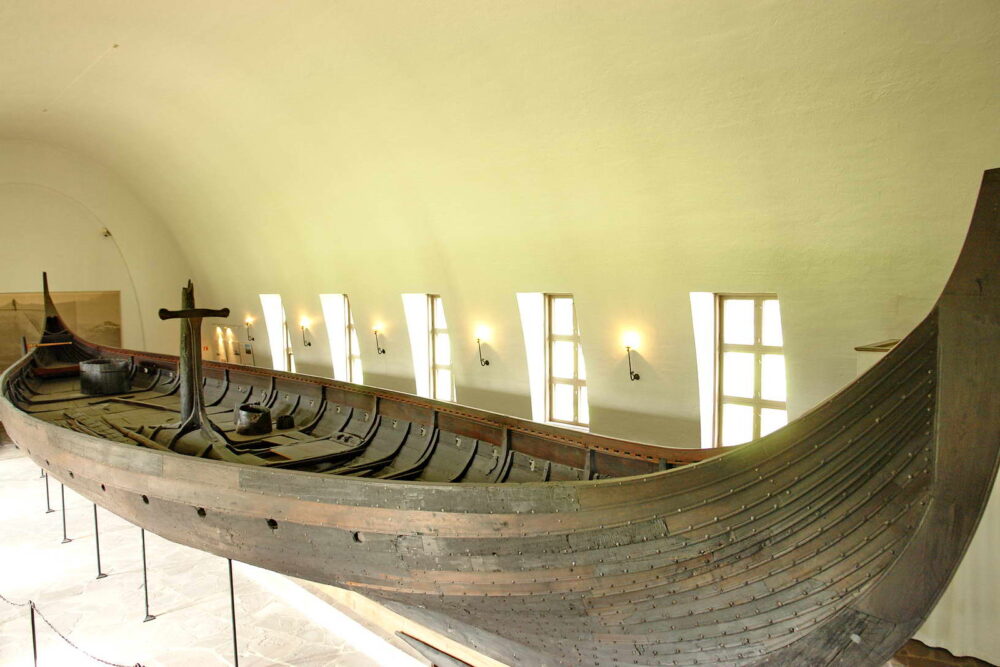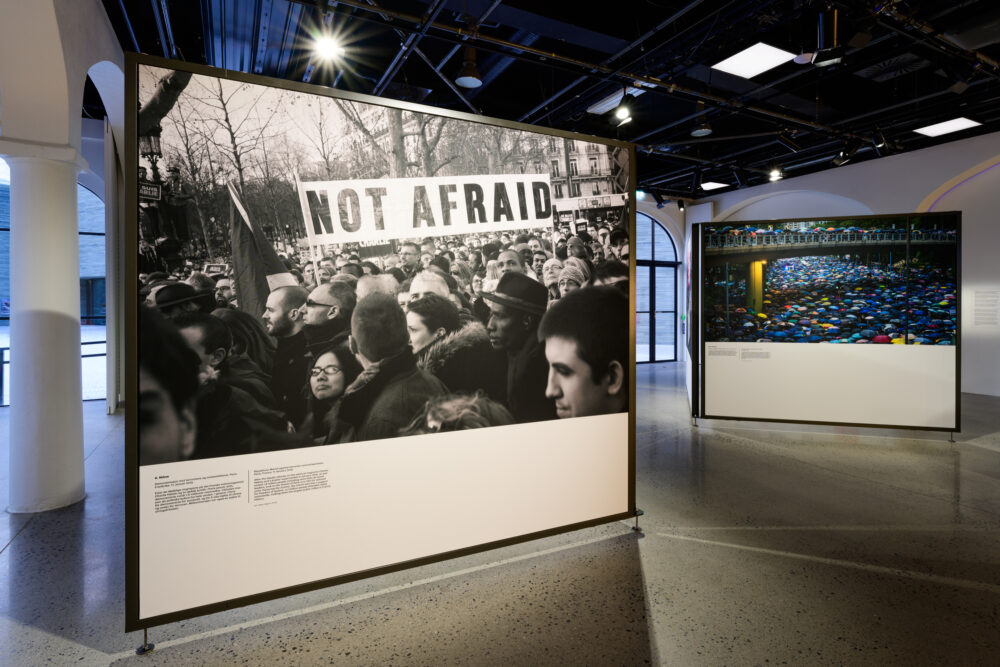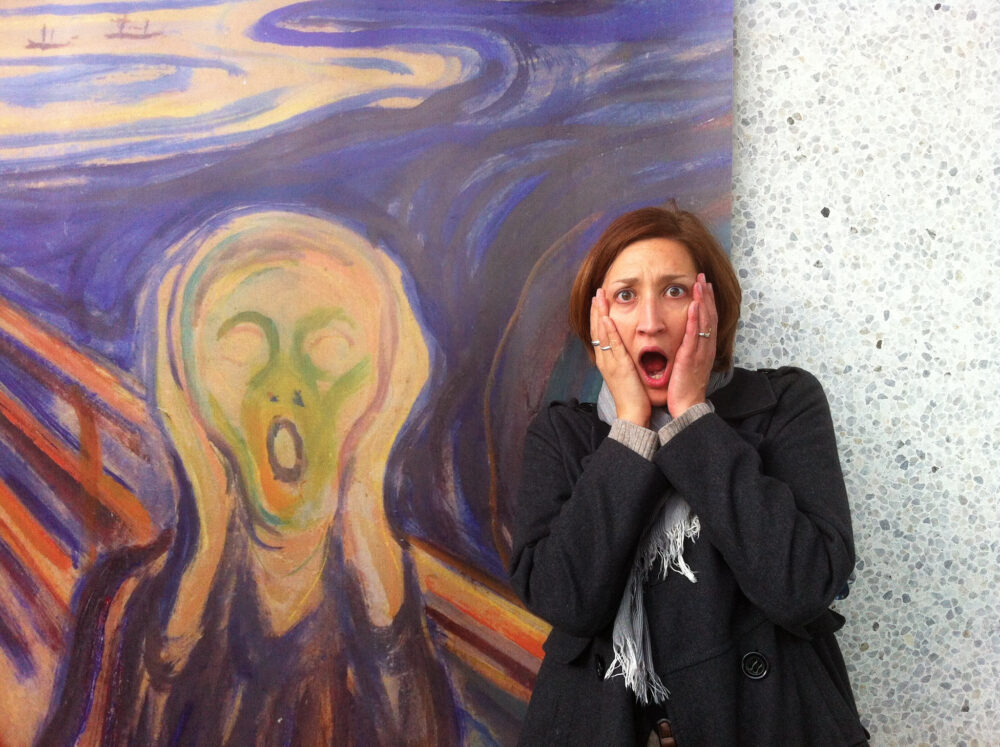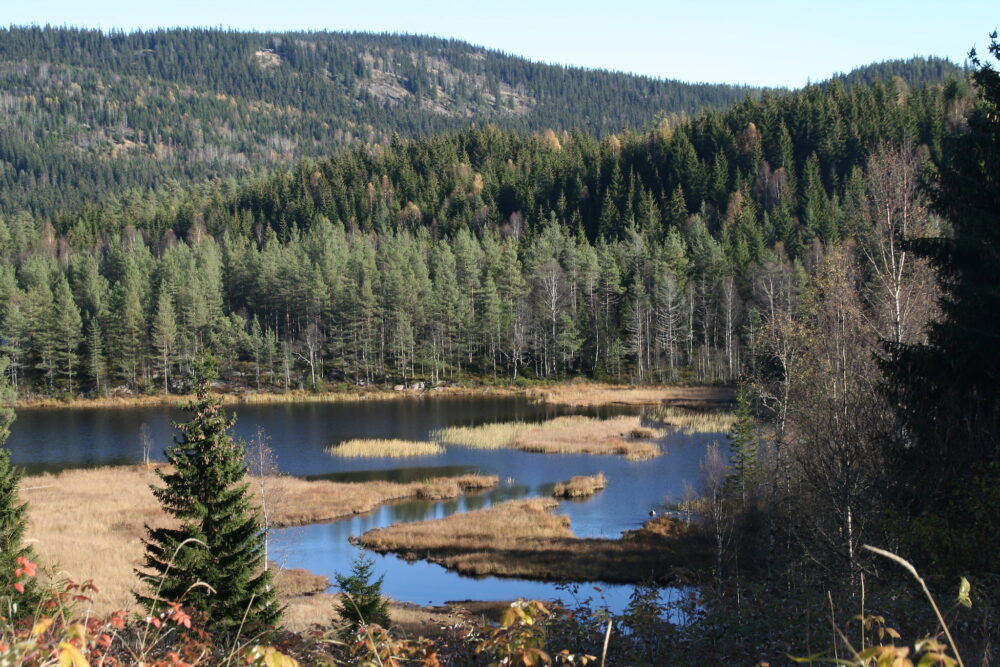Positioned on Norway’s southern coast at the head of the Oslofjord, Oslo combines sublime natural scenery with an array of top-notch cultural attractions.

The medieval Akershus Fortress (Photo: Brendan Campbell via Flickr / CC BY-ND 2.0)
The Norwegian capital is blessed with gorgeous natural surroundings and a rich maritime history that is most closely associated with the Viking era. This has given rise to multiple museums that celebrate and preserve this important aspect of Oslo’s – and indeed Norway’s – cultural heritage. Indeed, its why so many travellers – despite its reputation for sky-high prices – are attracted here every year, and for those who haven’t but are tempted to do so, we’ve picked out 20 of the most city’s most unique things to see and do.
Look around a medieval fortress
Juxtaposed against more recent additions to central Oslo’s cityscape is the imposing presence of Akershus Fortress, a 13th century medieval castle and former royal residence that has been at the heart of the Norway’s growth and development for over 700 years. The castle is surrounded by verdant greenery and features banquet halls, a Royal Mausoleum, government reception rooms, and a small church, and draws large numbers of visitors throughout the year. During the summer months there are guided tours and the castle is also a popular venue for major events including concerts, public holiday celebrations and ceremonies.
0150 Oslo / Mon-Sun 6am-9pm
Immerse yourself in the Viking Age
Over 1000 years ago, the Vikings sailed along the shores of Europe, up rivers and across the open sea throughout the North Atlantic. Together, their majestic vessels played a key role in the formation of Norway and its Scandinavian counterparts. Until recently, the fascinating story of the Vikings and their world-changing ships was told at the Viking Ship Museum, but in 2026 it will reopen under a new name. The Museum of the Viking Age will continue to shine a light on that epochal era, showcasing the world’s best-preserved Viking ships and more than 8,000 other objects from the Viking age, including incredible woodcarvings, mysterious skeleton remains and an immersive film that takes you back in time – all curated in a more audience-friendly way than ever before.

An exhibit at the Viking Ship Museum (Photo: Dimitris Karagiorgos via Flickr / Public Domain Mark 1.0)
Enter a beautiful place of worship
Dating back to 1697, the Lutheran Oslo Cathedral is by anyone’s estimation one of the city’s most beautiful landmarks. Located downtown, the parish church is a sight to behold both outside and in, and was restored back to its original baroque interior in 1950. Brightly painted ceiling, stained glass windows, and bas-relief sculptures augment the church’s organ, altarpiece, pulpits and balconies. Free guided tours of the church are available, but must be booked in advance.
Karl Johans gt. 11 / Fri 4pm-11.30pm Sat-Thurs 10am-4pm
Join a fjord sightseeing cruise
No trip to Norway is complete without witnessing one of the country’s majestic waterways known as ‘fjords’. For Oslo visitors, the Oslofjord is the closest and most accessible, and can be explored on a number of guided sightseeing tours. Among them, this two-hour excursion aboard an electric ferry boat is one of the most popular, allowing you to take in the beauty of the region as you make your way through the fjord and past the area’s array of natural attractions including Hoveøya Islan and Bygdøy Peninsula, as well as shoreline views of city landmarks such as the Munch Museum, the Opera House, and Oslo City Hall. Guests can choose to disembark at Bygdøy peninsula or take a round-trip back to the pier. Snacks and hot and cold drinks can be purchased onboard.

A view of the Norwegian fjords from a boat (Photo: Trollcruise AS / Courtesy GetYourGuide)
Stroll along a seafront boardwalk
Another great Oslo district to explore is Aker Brygge, where modern shopping and dining venues sit side by side with historic shipyard buildings and a seafront boardwalk throngs with pleasure-seekers on sunny days. Outdoor tables make for great people watching and a chance to soak up the views of the marina and Oslo Fjord, or for indoor pursuits the district is also home to two major cultural attractions – the Nobel Peace Center and the Astrup Fearnley Museum of Modern Art. A short walk across a connecting bridge brings you to the new neighbourhood of Tjuvholmen, a must-see for design and architecture aficionados.
Check out a magnificent modern opera house
Built on the waterfront in 2008, the Oslo Opera House swiftly became one of the city’s most famous tourist attractions. Home of the Norwegian National Opera and Ballet, the building’s striking design makes it a landmark worth visiting in and of itself, boasting an almost futuristic aesthetic as well as a unique walkable roof. Inside, there’s a Main Hall featuring an intimate horse-shape offering a nod to the origins of classic theatre combined with wooden balconies and beams representing Norwegian nature. Adding to the drama, a central chandelier made from hand-cast glass bars is lit from behind by LED lights to create a moon-like presence. As well as live performances, guided tours of the opera house are also available, along with outdoor plays, concerts and other events throughout the year.
Kirsten Flagstads Plass 1 / Mon-Sun 11am-10pm

The Oslo Opera House seen from over the water (Photo: Barry via Flickr / CC BY 2.0)
Learn about a prestigious peace award
Located in a 19th-century train station building in the heart of Oslo, the Nobel Peace Center invites visitors to come and learn about the history of the eponymous and hugely prestigious award known as the Nobel Peace Prize. Through a range of exhibitions, artefacts, films, and interactive installations, the centre provides insights and facts about how and why the prize was created, and the long line of winners who have contributed significantly to the ongoing efforts to achieve global peace. During most of the remainder of 2023, the centre will remain closed for reconstruction, but is inviting people to a free guided walk every day until 28 September 2023 that takes guests through the story of the prize. The 75-minute walk starts in front of the centre at City Hall Square and finishes in front of the Norwegian Nobel Institute.
Brynjulf Bulls plass 1 / www.nobelpeacecenter.org

An exhibition space inside the Nobel Peace Center (Photo: Johannes Granseth / Nobel Peace Center)
Delve into Oslo’s art scene
One of Norway’s most celebrated artists, Edvard Munch spent much of his life in Oslo, and his legacy is celebrated at a museum dedicated to his life and career. A modern, tower-shaped structure along the city’s upscale waterfront, Munch Museum houses the artist’s most famous work, The Scream, as well as more than 200 of his other paintings across several permanent exhibitions spanning 13 floors, plus artefacts from Munch’s life in Norway and other European cities. There’s also an interactive area where visitors can create their own version of a Munch painting.
Edvard Munchs Plass 1 / Sun-Tues 10am-6pm Weds-Sat 10am-9pm

A visitor to the Munch Museum mimics its most famous painting (Photo: Jeremy Keith via Flickr / CC BY 2.0)
Another renowned Oslo cultural institution, Astrup Fearnley Museum of Modern Art houses a huge assortment of contemporary art representing various time periods. Situated along Oslo’s harbour promenade, the museum is spread across two buildings and includes sculptures, paintings and video installations by such notable artists as Damien Hirst, Jeff Koons, and Cindy Sherman. Notwithstanding its art collection, the museum’s eye-catching architecture makes it worth a visit alone, featuring a visually arresting sloping roof with spectacular views of the harbour and fjord, together with a large glass facade and interior atrium that baths the exhibited artwork in natural light.
Strandpromenaden 2 / Fri-Weds 11am-5pm Thurs 11am-7pm
Pay a visit to a royal residence
Constructed in the early 19th century, The Royal Palace continues to serve as the official royal residence, being home to King Harald V and Queen Sonja of Norway. It is also the daily workplace of the Royal Court and hosts regular functions, including gala dinners and visits from foreign heads of state. The palace’s southern and eastern gardens are open to the public and are popular spots to relax, enjoy a picnic and feed the ducks in the pond. Tours of the palace are also available during the summer months, and the traditional ritual of the Changing of the Guard takes place each afternoon.
Slottsplassen 1 / Mon-Sun 10am-5pm

The Royal Palace in Oslo (Photo: YougoPL via Flickr / CC BY 2.0)
Discover a hip neighbourhood
Every city has its hip side and in Oslo it can be found in the district of Grunerløkka. A 15-minute walk north of the city centre brings you to this funky riverside neighbourhood, where chic galleries, vintage shops and vibrant street art exude a bohemian look and feel. Rather than exploring the area on your own, to really get under its skin you might consider booking onto a Grunerløkk walking tour. Taking around 2.5 hours, during the tour your guide will point out notable landmarks and places of interest while regaling you with stories and facts about this offbeat corner of Oslo.
Attend a fun-packed music festival
Held annually in the scenic green surroundings of Oslo’s Tøyen Park, the Øya Festival has grown quickly since its humble beginnings in 1999, flourishing into one of Norway’s biggest and most important rock and indie music festivals. Over 60,000 music lovers now attend the four-day event, which features everyone from international stars to up-and-coming artists. Shows are held across three stages and there are also food vendors and a host of stalls selling records, clothes and comic books.
Tøyen Park / August each year

A live stage performance at Øya Festival (Photo: Kristoffer Trolle via Flickr / CC BY 2.0)
Explore a mesmerising sculpture park
The world’s largest sculpture park composed of art by a single artist, Vigeland Sculpture Park is one of Norway’s most visited attractions. The brainchild of the late internationally-acclaimed Norwegian sculptor Gustav Vigeland, the park features over 200 eye-catching sculptures made from granite and bronze alloy, each unerringly realistic and revered for their ability to convey powerful human emotions. While many chose to explore the free-to-enter park independently, there are also guided tours available, including this two-hour mid-morning tour during which your guide will share insights on the man who spent his life creating this remarkable open-air gallery, and the stories behind each of its statues.
Frogner Park, Kongsveien 23 / Open all hours
Head out into the wilderness
The forested hills and lakes that comprise the Nordmarka occupy a tract of land that extends deep inland from central Oslo. There are dozens of access points to this popular wilderness, with its vast network of hiking and biking trails, idyllic lakes for swimming, and even cross-country ski trails during the winter months, some of which are illuminated in the evenings, drawing vast numbers of outdoor lovers throughout the year. Visitors can also hire cabins, either to take a break, enjoy a meal, or for overnight stays.

The verdant surroundings of the Nordmarka wilderness (Photo: Eirik Newth via Flickr / CC BY 2.0)
Go island hopping
Surrounding Oslo are a number of picturesque islands that make up the Oslo fjords, some of which can be visited on a guided island-hopping tour. This half-day excursion lets you explore local villages, sea cliffs, historic sites, forests and a bird sanctuary on three different islands, travelling between them on local ferries. There’ll be stop-offs for swimming, so be sure to bring your swimsuit and towel, as well as a picnic lunch on a secluded beach (bring your own food, or purchase along the way). The tour starts and ends at a designated pier in the city centre.
Embark on a river kayaking adventure
Oslo is easy on the eye from every vantage point, but there’s nothing quite like admiring the city from the water – and visitors can do just that by joining a 1.5-hour kayaking trip on the Akerselva River. Meeting at Nedre Foss park, where you’ll be kitted out with your equipment and receive a quick safety briefing, you’ll head off along the river, paddling through the fashionable district of Grunerløkka, past downtown Grønland, and then down to the gorgeous Oslo Fjord via an atmospheric 500-metre long tunnel. The trip finishes on the banks of the river right next to the Oslo Opera House, a famous city landmark. All equipment is included in the price. The tour is suitable for ages 10 and over.

Kayakers paddle down the Akerselva River (Photo: Mad Goats AS / Courtesy GetYourGuide)
Pamper yourself at an urban sauna
Talk of Scandinavian saunas tends to elicit childish giggles among non-Nordics, but the reality is that this traditional and much-loved past-time has a number of proven health benefits for the mind and body. In Oslo, urban saunas are ubiquitous, with several dotted around the city’s harbour area. Among the most popular is Tjuvholmen, where entry allows you up to two hours to enjoy the sauna, ice bath, or simply to swim in the fjord. The sauna is self-service, so if you’re a novice it’s advisable to let a local keep the heat up with the provided firewood and matches. Admission also includes fresh drinking water.
Strandpromenaden / Tues & Thurs-Sun 10am-9pm Weds 6am-9.30pm Mon 12pm-9pm
Get a taste of Oslo’s food culture
Oslo has a rich and diverse culinary scene and visitors can immerse themselves in it by joining a street food culture walking tour. Over 2.5 hours, you’ll be shown around the city on foot, passing some of its most popular spots as well as several hidden gems. Along the way, you’ll stop to sample local dishes and delicacies including Norwegian waffles, Norwegian hot dogs, a tasting plate of Norwegian cheeses and cured meats, and a special soft drink to wash it all down. Throughout the tour, your guide will provide commentary on Oslo’s food heritage.

(Photo: OsloWay / Courtesy GetYourGuide)
Walk to the top of a prestigious ski jump
Perched atop a hill overlooking Oslo, about a 20-minute drive from the city centre, the Holmenkollen Ski Jump offers the chance to follow the footsteps of real-life Winter Olympians. Boasting a distinguished 100-year history, the site can be visited by ascending to the top of the tower where you’ll be greeted with a nerve-jangling perspective on the challenge faced by the highly skilled athletes who come to perform the jump. Under the tower, there’s a museum that chronicles more than 4,000 years of skiing history, and in the winter months a two-kilometre toboggan is open to daring members of the public.
Kongeveien 5 / Mon-Sun 10am-5pm

A nerve-jangling view from the top of the Holmenkollen Ski Jump (Photo: Chrissie Sternschnuppe via Flickr / CC BY-SA 2.0)
Pick up some local produce at a famous food hall
If you’re visiting Oslo and consider yourself a foodie, then there’s one place you cannot miss and that’s the Mathallen Food Hall. Situated in the city’s bustling Vulkan neighbourhood, the indoor market opened in 2012, inspired by the great European food courts, and offers a huge choice of food stalls, speciality shops and cafes, all filled to the brim with enticing products from both Norwegian and international small-scale producers. There’s plenty of seating so you can eat in the market itself, or take away if you prefer. The market also hosts several food and drink-themed festivals throughout the year.
Vulkan 5 / Mon-Sun 11am-8pm